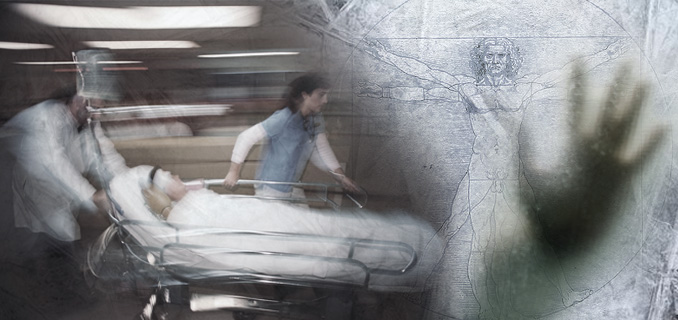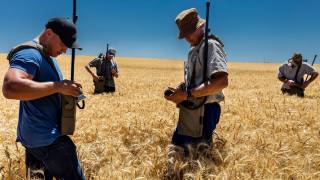Suspended Animation: Emergency Patients to be Frozen Between Life and Death

Later this month emergency patients suffering from critical knife or gunshot wounds who arrive at the UPMC Presbyterian Hospital in Pittsburgh, Pennsylvania, will be placed into suspended animation, a state between life and death, in a bid to ’pause time’ and help doctors save their lives.
This experimental technique of cooling the patient’s body and replacing their blood with a saline solution sounds macabre, but has seen success in animal trials. Many reports of humans surviving extreme cold conditions over long periods support the potential for this survival hibernation.
[Doctors Amazed As Frozen Woman Comes Back To Life]
NASA-funded scientists are also interested in inducing a hibernation state in astronauts, and "revolutionizing technology to make the challenge of human space travel less difficult and arduous so that humans might one day literally dream their way to Mars."
Researchers are coming to realize through amazing hypothermia and resuscitation revival cases that death is more complicated than the black and white issue we all assume.
[CPR and hypothermia now being used - reviving a man who’d been clinically dead for more than an hour]
[Dead man comes back to life after 45 minutes]
New Scientist reports:
"We are suspending life, but we don’t like to call it suspended animation because it sounds like science fiction," says Samuel Tisherman, a surgeon at the hospital, who is leading the trial. "So we call it emergency preservation and resuscitation."
The technique involves replacing all of a patient’s blood with a cold saline solution, which rapidly cools the body and stops almost all cellular activity. "If a patient comes to us two hours after dying you can’t bring them back to life. But if they’re dying and you suspend them, you have a chance to bring them back after their structural problems have been fixed," says surgeon Peter Rhee at the University of Arizona in Tucson, who helped develop the technique.
The benefits of cooling, or induced hypothermia, have been known for decades. At normal body temperature – around 37 °C – cells need a regular oxygen supply to produce energy. When the heart stops beating, blood no longer carries oxygen to cells. Without oxygen the brain can only survive for about 5 minutes before the damage is irreversible.
However, at lower temperatures, cells need less oxygen because all chemical reactions slow down. This explains why people who fall into icy lakes can sometimes be revived more than half an hour after they have stopped breathing.
Just before heart and brain surgery, doctors sometimes lower body temperature using ice packs, and by circulating the blood through an external cooling system. This can give them up to 45 minutes in which to stop blood flow and perform surgery. However, the cooling process takes time and can only be done with careful planning and preparation.
When someone reaches an emergency department with a traumatic gunshot injury or stab wound, slow cooling isn’t an option. Often their heart has stopped beating due to extreme blood loss, giving doctors only minutes to stop the bleeding and restart the heart. Even if the bleeding can be stopped, it’s not like filling up an empty gas tank. Resuscitation exposes the body to a sudden onslaught of oxygen, which can cause tissues to release chemicals that damage cells and cause fatal "reperfusion" injuries.
Finding ways to cool the body until it reaches a state of suspended animation – where people are not alive but not yet dead – could give doctors more time in an emergency.
[...]
"After we did those experiments, the definition of ’dead’ changed," says Rhee. "Every day at work I declare people dead. They have no signs of life, no heartbeat, no brain activity. I sign a piece of paper knowing in my heart that they are not actually dead. I could, right then and there, suspend them. But I have to put them in a body bag. It’s frustrating to know there’s a solution."
That solution will be put to the test in humans for the first time. A final meeting this week will ensure that a team of doctors is fully prepared to try it. Then all they have to do is wait for the right patient to arrive.
That person will have suffered a cardiac arrest after a traumatic injury, and will not have responded to attempts to start their heart. When this happens, every member of Tisherman’s team will be paged. "The patient will probably have already lost about 50 per cent of their blood and their chest will be open," he says. The team sees one of these cases each month. Their chance of survival is less than 7 per cent.
Source
These experiments may indeed change our definitions of life and death.
By Red Ice Creations






















